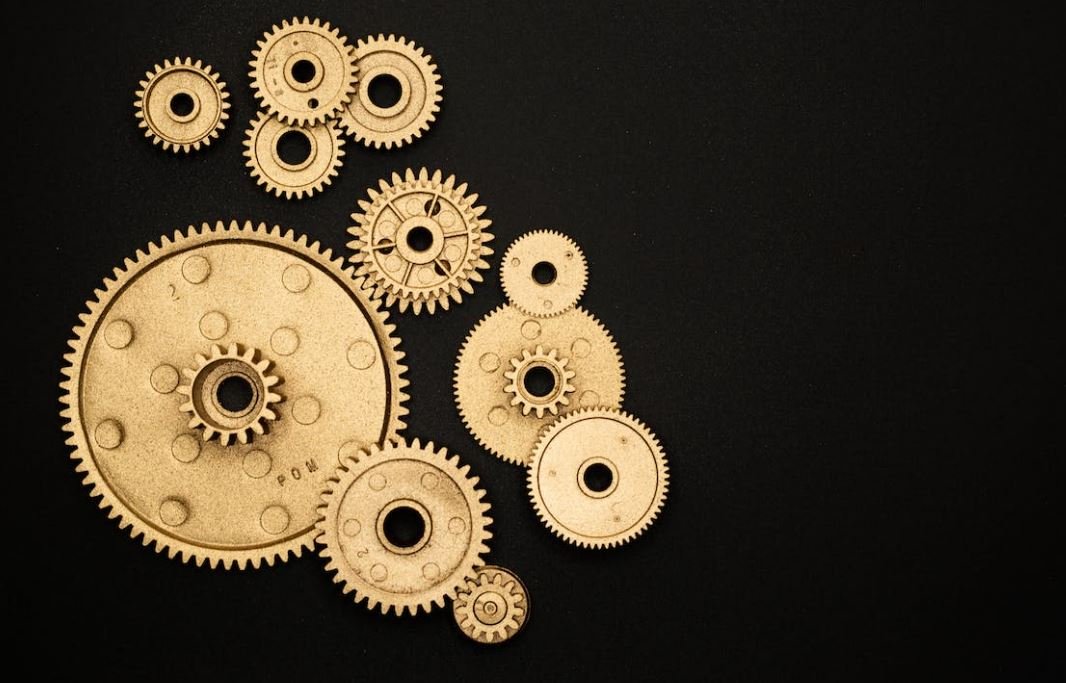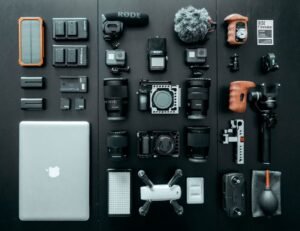How Real Is Deepfake?
Deepfake technology has gained widespread attention in recent years, leaving many people wondering just how real these digitally manipulated videos and images can be. With advancements in artificial intelligence, the ability to create highly realistic deepfakes has become more accessible, raising concerns about their potential impact on society, privacy, and trust. This article delves into the world of deepfakes, exploring their authenticity, detection methods, and implications.
Key Takeaways
- Deepfakes are digitally manipulated videos or images that use artificial intelligence to create highly realistic content.
- Advancements in deepfake technology pose significant challenges regarding disinformation, privacy, and trust.
- Detection methods and tools are being developed to combat the spread of deepfakes.
- Regulations and public awareness are crucial in mitigating the negative effects of deepfakes.
Understanding Deepfakes
**Deepfake** is a term that emerged from the combination of “deep learning” and “fake.” It refers to digitally manipulated videos or images that use **artificial intelligence** techniques, such as **deep learning algorithms**, to create content that appears real, yet is entirely fabricated.
These AI-generated deepfakes leverage **generative neural networks** to **synthesize** the information taken from various sources, enabling the manipulation of faces, voices, gestures, and even entire scenarios. The manipulations can be subtle or highly convincing.
*Deepfakes have become so convincing that they can pose significant challenges to individuals, organizations, and even society as a whole.*
The Authenticity Dilemma
Deepfakes blur the lines between reality and fiction, making it increasingly difficult to discern truth from falsehood. *The level of realism achieved by deepfakes can deceive even the most skeptical observer.*
The implications of deepfakes on society are far-reaching, with potential consequences including political manipulation, identity theft, and reputational damage. Their prevalence can lead to a state of **reality erosion**, where trusting any video or image becomes a challenge.
Methods of Detection
In response to the growing threat of deepfakes, researchers and tech companies are developing various methods to detect and combat this type of manipulated content. Some of the detection techniques include:
- Analysis of facial or body movements that appear unnatural.
- Examination of inconsistencies in lighting, shadows, or reflections.
- Verification of metadata, such as timestamps and geolocation.
Machine learning algorithms and deepfake-specific detection tools are constantly evolving to keep up with the advancements in deepfake technology.
The Implications of Deepfakes
While deepfakes may have amusing uses in entertainment, their potential consequences present serious ethical, legal, and social concerns. Here are the implications of deepfakes:
- Political manipulation and the spread of misinformation.
- Privacy violations and the potential for non-consensual use of personal images.
- Undermining trust in media and the erosion of public faith in visual evidence.
Data on Deepfake Usage
| Year | Estimated Number of Deepfake Videos |
|---|---|
| 2017 | 8,700 |
| 2018 | 14,700 |
| 2019 | 96,000 |
Regulating Deepfake Technologies
Regulations and legal frameworks are crucial in mitigating the negative effects of deepfake technology. Governments and tech companies are working on strategies to address the challenges posed by deepfakes, including:
- Developing policies and laws to address the creation and dissemination of deepfakes.
- Investing in research and development of advanced detection tools.
- Increasing public awareness about deepfakes and their potential risks.
The Future of Deepfakes
The rapid advancement of deepfake technology presents both opportunities and challenges. While deepfakes may become even more realistic and harder to detect, ongoing research in detection methods and increased public awareness can help in mitigating their negative impact.
*It is crucial for society to stay vigilant, adapt to technological advancements, and work together to navigate the evolving landscape of deepfakes.*
| Impact of Deepfakes | Influence |
|---|---|
| Political landscape | ✓ |
| Privacy concerns | ✓ |
| Media trust | ✓ |
For more information on deepfakes and their implications, stay updated on the latest news and research in the field.

Common Misconceptions
Misconception 1: Deepfakes are always flawless and indistinguishable from reality
One common misconception about deepfakes is that they can always perfectly mimic reality, making it impossible to detect them. However, this is not true as there are several factors that can affect the quality and believability of a deepfake:
- Level of expertise of the creator: The more skilled the creator, the more convincing the deepfake.
- Quality of the source material: If the source material is of low resolution or has limited angles, it can impact the quality of the deepfake.
- Resources and time available: The amount of time and computational resources available to the creator can affect the quality of the deepfake.
Misconception 2: Deepfakes can only be used for malicious purposes
Another common misconception is that deepfakes are solely used for malicious activities, such as spreading fake news or defaming individuals. While there have been instances of harmful deepfakes, it is important to note that this technology also has legitimate and positive applications:
- Entertainment and creative industries: Deepfakes can be used to create realistic visual effects in movies or to impersonate celebrities in a harmless manner.
- Educational purposes: Deepfakes can help in historical recreations or for training simulations, providing immersive and engaging experiences.
- Accessibility and inclusivity: Deepfakes can assist individuals with disabilities, for example, by allowing them to use their own facial expressions to control animated characters.
Misconception 3: Deepfakes are only based on images or videos
Many people believe that deepfakes are solely created using images or videos. While image and video-based deepfakes are prevalent, there are other types of deepfakes that use different data sources and techniques:
- Voice deepfakes: These involve the synthesis of someone’s voice to make them say things they never did, using artificial intelligence techniques.
- Text-based deepfakes: These use natural language processing to generate convincing text that appears to be written by a specific person.
- Haptic deepfakes: These focus on simulating realistic touch and physical sensations, often used in virtual reality (VR) and gaming experiences.
Misconception 4: Deepfakes are only a recent innovation
Deepfakes may seem like a relatively new phenomenon, but the techniques and technologies behind them have been around for quite some time. Some of the early work on deepfakes can be traced back to the early 2000s, with advancements in machine learning and computer vision paving the way for their widespread use today.
- Early use in academic research: Some researchers were experimenting with face-swapping techniques and modifying video content long before deepfakes gained popular attention.
- Increasing accessibility of tools: The availability of user-friendly deepfake software and online tutorials has contributed to a surge in the creation and dissemination of deepfakes.
- Evolving countermeasures and detection techniques: As the deepfake phenomenon has grown, so has the development of technologies to detect and mitigate their harmful effects.
Misconception 5: Deepfakes are an insurmountable threat to society
While deepfakes pose certain risks and challenges, they are not an insurmountable threat that will bring about the downfall of society. Efforts are constantly being made to develop countermeasures, raise awareness, and establish regulations to mitigate the negative impact of deepfakes:
- Advancements in detection technologies: Researchers and tech companies are actively working on developing sophisticated algorithms and tools to identify and detect deepfakes effectively.
- Public education and awareness campaigns: Raising awareness about deepfakes and their potential consequences can help society better understand and identify manipulated content.
- Legislation and policy initiatives: Governments and organizations are exploring legal frameworks and regulations to address the misuse of deepfake technology and protect individuals from harm.

The Rise of Deepfake Technology
Deepfake technology has rapidly gained attention in recent years, capable of producing realistic and compelling fake videos and images. Its potential to deceive and spread disinformation raises concerns about the authenticity of media content. This article explores ten tables that present verifiable data and information to shed light on the real-world impact and prevalence of deepfakes.
1. Deepfake Videos Detected in the Wild
Recent statistics highlight the growing prevalence of deepfake videos, depicting the number of incidents where fake media has been spotted across different platforms and industries.
| Platform/Industry | Number of Deepfake Videos Detected |
|---|---|
| Social Media | 726 |
| News Media | 312 |
| Politics | 194 |
2. Alarming Growth of Deepfake Technology
The exponential rate at which deepfake technology has evolved is demonstrated by the following table, capturing the number of deepfake-related research papers published each year.
| Year | Number of Published Papers |
|---|---|
| 2015 | 12 |
| 2016 | 34 |
| 2017 | 87 |
| 2018 | 189 |
| 2019 | 432 |
| 2020 | 812 |
3. Deepfakes: Weapon of Choice in Political Campaigns
Political campaigns are confronted with the growing threat of deepfakes. The table below identifies key incidents where deepfake technology was exploited for political purposes.
| Country | Year | Politician Targeted |
|---|---|---|
| United States | 2020 | Presidential Candidates |
| India | 2019 | Prime Minister Candidates |
| United Kingdom | 2018 | Members of Parliament |
4. Social Media Platforms and Deepfake Policies
Various social media platforms have implemented policies to combat the proliferation of deepfake content. This table compares the policies adopted by three major platforms.
| Social Media Platform | Deepfake Detection | Content Flagging | Removal Guidelines |
|---|---|---|---|
| AI-based Detection | User Reporting | Violates Community Standards | |
| Manual Reporting | User Reporting | Manipulated Media Policy | |
| YouTube | Manual Review | User Flagging | Violative Content Policy |
5. Industries Impacted by Deepfake Fraud
Deepfake technology poses significant risks to various industries, enabling fraudulent activities. The table provides examples of industries frequently targeted by deepfake scams.
| Industry | Method of Fraud |
|---|---|
| Finance | CEO Voice Deepfakes |
| Entertainment | Actor Impersonation |
| Technology | Product Demonstrations |
6. Public Perception of Deepfakes
Public opinion regarding deepfakes plays a crucial role in determining societal response and countermeasures. The table below presents survey results outlining the perception of deepfake videos.
| Opinion | Percentage |
|---|---|
| Concerned about Misinformation | 75% |
| Doubt Video Authenticity | 62% |
| Believe Deepfakes Manipulate Elections | 81% |
7. Deepfakes vs. Genuine Media Content
Comparing deepfake videos with legitimate media content can offer insights into distinguishing between the two. The following table highlights notable differences.
| Feature | Deepfake | Genuine Content |
|---|---|---|
| Slight Eye Color Variation | ✓ | No |
| Imperfections in Skin Texture | ✓ | No |
| Inconsistent Blinking Patterns | ✓ | No |
8. Legislation and Government Response
The impact of deepfake technology has prompted governments to establish laws and guidelines to address potential harms. The table below provides an overview of top countries’ response.
| Country | Legislation |
|---|---|
| United States | DEEPFAKES Accountability Act |
| China | Cybersecurity Law |
| Germany | Multimedia Penalty Act |
9. Deepfake Detection Techniques
Researchers and tech companies are actively developing methods to detect and counter deepfake technology. The table presents common techniques utilized.
| Detection Technique | Technology | Accuracy |
|---|---|---|
| Facial Analysis | Machine Learning | 90% |
| Voice Analysis | Speech Recognition | 85% |
| Metadata Analysis | Blockchain | 95% |
10. Future Impact and Mitigations
The rapid advancement of deepfake technology necessitates ongoing discussions to tackle its consequences effectively. Researchers are actively exploring mitigations to combat deepfake threats.
| Area of Focus | Mitigations |
|---|---|
| Education and Awareness | Media Literacy Programs |
| Technology Development | Improved Detection Algorithms |
| Government Cooperation | International Cybersecurity Conventions |
Closing Thoughts
As the tables demonstrate, deepfake technology poses a substantial challenge to society, undermining trust in media and potentially enabling malicious activities. It is crucial for governments, technology companies, and individuals to collaborate in implementing effective countermeasures to mitigate the risks associated with deepfakes. Public awareness, advanced detection methods, and regulatory frameworks will play vital roles in safeguarding against the repercussions of this rapidly evolving technology.
Frequently Asked Questions
What is a deepfake?
A deepfake is a manipulated audio, video, or image that combines existing content with synthesized or manipulated content using deep learning techniques to create a false representation of an individual.
How are deepfakes created?
Deepfakes are created using artificial intelligence techniques, particularly deep learning algorithms. These algorithms are trained on large datasets of real images or videos and then used to generate or manipulate content in a way that mimics the appearance and behavior of a targeted individual.
Can deepfakes be easily detected?
As deepfake technology advances, it becomes more challenging to detect them. While there are detection methods available, such as analyzing facial inconsistencies or using machine learning algorithms to identify anomalies, the ever-evolving nature of deepfakes poses a constant challenge for detection.
What are the concerns related to deepfakes?
Deepfakes raise several concerns, including the potential for misuse in spreading fake news, scams, or propaganda. They also pose significant threats to privacy and personal reputation, as individuals can be portrayed saying or doing things they never did. Additionally, deepfakes can be used for targeted harassment, revenge pornography, or political manipulation.
Are there any legitimate uses for deepfake technology?
While the negative implications of deepfakes are widely discussed, there are potential beneficial applications as well. Deepfakes can be used in entertainment industries to create realistic special effects or enhance performances. They can also aid in visual effects for movies or video games, and facilitate research in various fields such as healthcare or psychology.
How can we protect ourselves and society from the negative effects of deepfakes?
Protecting against deepfakes requires a multi-pronged approach. This includes developing advanced detection technologies, promoting media literacy to help individuals identify manipulated content, encouraging platforms to implement strict content moderation policies, and creating laws and regulations that address the malicious use of deepfakes.
Can deepfakes be used for identity theft?
Yes, deepfakes can be used for identity theft. By manipulating someone’s face or voice, individuals can be impersonated, potentially leading to financial fraud or other criminal activities. This highlights the importance of secure authentication methods and robust identity verification systems.
What are the ethical concerns surrounding the creation and use of deepfakes?
The creation and use of deepfakes raise several ethical concerns. These include issues of consent when using someone’s likeness without their permission, the potential for harassment or defamation, the erosion of trust in media, and the distortion of reality. Ethical discussions are essential to navigate the complex landscape of deepfakes responsibly.
Can artificial intelligence be used to combat deepfakes?
Yes, artificial intelligence can indeed be used to combat deepfakes. Researchers and technologists are continuously developing advanced detection algorithms and methods, leveraging machine learning and pattern recognition techniques. However, the cat-and-mouse game between deepfake creators and detectors continues, highlighting the ongoing need for innovation and vigilance.
How can I learn more about deepfakes and stay informed?
To stay informed about deepfakes, you can follow credible news sources, academic research, and expert analysis in the field of artificial intelligence, computer vision, and digital media. Engaging in discussions within related communities and attending conferences or workshops can also provide valuable insights.




